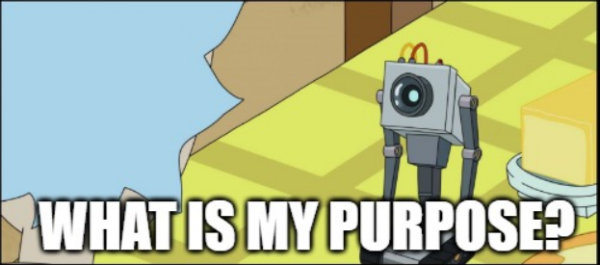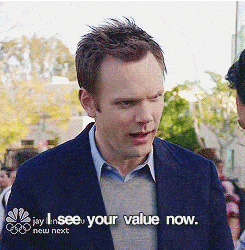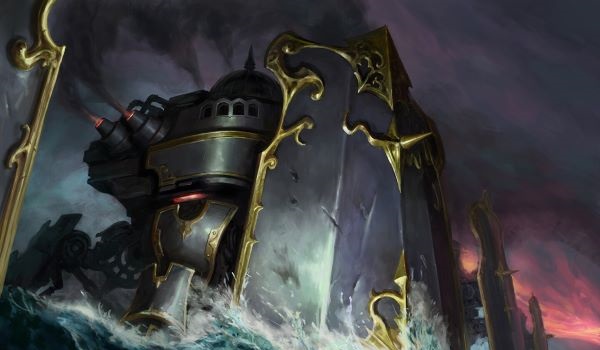Are you a Quiet Speculation member?
If not, now is a perfect time to join up! Our powerful tools, breaking-news analysis, and exclusive Discord channel will make sure you stay up to date and ahead of the curve.
Magic is, at its core, a game of resource management. The game's many interactions ask us what resources we value most in any given moment. This decision point manifests itself in a number of ways, none more frequent than blocking.
Should we block? When do we block? And most importantly, why do we block?
The decision to block, like every decision in Magic, is the end result of evaluating context. This week we will explore this context. While the variables can and will always change, we're going to zero in on one specific version of this decision. Extrapolate the variables to your own situation as needed.
The Turn-Two Trade
Our opponent plays a creature on turn two. We play a creature on turn two. Our opponent untaps their lands, draws a card, and attacks.
Do we block? Do we engage in combat and accept the appearance of a trade?
This early offer of an exchange asks us to predict the value of a number of resources, with limited information. We don't know what our opponent is thinking, and as is true in most games of Limited, we don't know the contents of our opponent's deck, let alone their hand.
Life as a Resource
The phrase "life is a resource" is often used immediately before a player treats their life total like it's anything but. It has somehow become a justification for taking unnecessary damage. We want to preserve resources. In fact, as long as we preserve our life total longer than our opponent preserves theirs, we are extremely likely to win the game.
To continue stating the obvious:
- Our opponent is attacking us to pressure our life total.
- We are blocking to preserve our life total.
- If our creature dies in combat, we lose it as an avenue to pressure our opponent's life total.
By trading our creature here, we don't get to pressure our opponent's life total with it as a game piece. We don't know, however, if we're going to have a good attack on our turn. What if after attacking, our opponent deploys a powerful three-drop?Most three-drops can block two-drops profitably. If our opponent plays another two-drop, we can offer to trade two-drops, but that exchange is theoretically equal value to making the initial block.
A core question in assessing the value of a block in the above scenario then becomes thus: "will the exchange we offer on our turn be better than the exchange we could have made by blocking by a difference equal to, or greater than, the amount of life we lost by not blocking?" More often than not, the answer is no. For this reason, our default response to this opening offer should be to block and accept the trade.
However, if for some reason, we value the potential damage our creature represents more than the very real and present damage we're taking, then we shouldn't block. Thereby, the more essential aggression is to our gameplan, the less likely we are to block.
Creatures in Question
Creatures can be valuable for a number of reasons, but their power and toughness are a big part of the equation. The "stats-to-mana-cost" ratio is one of the most common ways to classify creatures. Grizzly Bears, Centaur Courser, Pillarfield Ox, and Wind Drake are all codes in the language of Limited. By engaging in on-curve combat, we're maximizing the value of that ratio. Those stats theoretically decline as the game goes on.
In our hypothetical scenario, we are trading with a creature of about equal value. That creature is earning its value by attacking. Shouldn't ours earn theirs by blocking? We put the two-drop in our deck so we can go to combat on turn three. Well, here we are. Use the card.
Yet, our creature may boast valuable upside. Will our creature get stronger, or generate some advantage over time? Will the game out scale our opponent's threat? In some scenarios, this early combat only hints at a fraction of this creature's ultimate value to our gameplan.
For example, if an opponent attacks a Scrapwork Mutt into our Third Path Iconoclast, we're likely take damage. In this instance, our two drop generates value by living, while their Mutt generates additional value by dying. If they're attacking us with an Argothian Sprite, we're more likely to block, but still may be reluctant to do so.
In this instance, it's not simply the potential damage our creature represents, but the value it generates throughout the game that can inform a decision. We don't need to trade our Third Path Iconoclast with an opponent's Grizzly Bears, especially if we have a Pillarfield Ox in hand to neutralize it later on. The game will out-scale the Grizzly Bears, while our creature still has a lot to give.
Overvaluing Our Creatures
As we draft a deck, it's perfectly normal to get excited about the quality of our cards.
Tantalizing Upside
Some creatures can present massive advantage if the appropriate conditions are met. However, not every game plays out as we might hope. Consider this scenario: Our opponent just played their Roc Hunter on turn two. We respond by playing a Drafna, Founder of Lat-Nam. The remaining cards in our hand include a Mightstone's Animation, a Stern Lesson, an Overwhelming Remorse, two lands, and a splashed Titania's Command.
It's easy to assume our rare legend is worth more than the dime-a-dozen Roc Hunter. Our deck possesses sequences where this creature can become an engine for value. Perhaps our plan was for the artificer to copy Energy Refractor, Phyrexian Rager, or others.
But that is not the reality we look at now. The Roc Hunter presents a clock that we are currently very bad at interacting with. Each turn we delay this decision, we pay a premium of three life. The trade seems imminent and if we're going to make it, we should do so now.
The Combat Trick Fallacy
So far, estimated value to our life totals and the creatures in the equation, both known entities. This is when we start to factor in the known-unknowns. Our opponent has cards in hand and lands untapped. We played our two-drop on turn two and consequently, we're tapped out. A combat trick could be lurking, but which one could it be, and do we even care?
A well-timed combat trick can be devastating. Winning a critical combat can swing games, and these cards can sometimes play out like a removal spell. If it's turn two and creatures are already dueling, there is a good chance that combat trick will be a good card in the game. If an opponent uses it here, you're still trading your early game play with an early game resource. Instead of trading a creature for a creature, you're trading one for a Giant Growth... plus the value of that mana on turn three, plus the value of their combat phase.
These are the questions that we should ask before evaluating.
- Will we have access to an answer on a later turn that would blow out their combat trick? For example, if we have a Disfigure, we might want our opponent to use their Whirling Strike on a later turn.
- Does the combat trick generate value that we could otherwise minimize? A card like Moment of Defiance can be a blowout if it saves a creature in addition to gaining life, drawing a card, and winning a combat.
In short, what are we playing around and why are we playing around it? In the early game, it's hard to tell what an opponent is holding. If we don't know what we're playing around, we're giving our opponent free equity.
Timing Chump Blocks
Later on in this game, we find ourselves racing an opponent. Our life totals are dwindling, and they attack us with a non-lethal Tocasia's Onulet. Because we are racing, we have insufficient creatures back to trade with the 4/4. We have a 1/1 Artifact Soldier. Do we block?
In games of Magic, it's typically better to delay the situation until the last possible opportunity. It's one of the reasons why instant speed removal plays so much better than sorcery speed versions. We could block this creature next turn and save ourselves the exact same amount of damage, while providing us with one more resource to use to determine our actions next turn. This is especially true if the creature is something like Gixian Skullflayer who might be even bigger next turn. So, don't block, right?

On many boards, this 1/1 token will not be worth very much. The four damage that it can save us from right now is very real. Our opponent can follow up with a lethal evasive threat or a burn spell that will end the game because we took that damage.
By giving our opponent this damage now, for free, we give them far more avenues to kill us within the next turn cycle. The damage we prevent this turn is not guaranteed on a later turn. If the game piece represents very little to us on the board, then it is often worth trading it in for the guaranteed value of a block now.

Shine a Little Light
While we're on the topic of blocking, this week we're going to shine a little light on the only defender in The Brothers' War, Coastal Bulwark.
When we initially looked at the set, we considered this card as a reasonable blocker. It has reasonable stats and presents an obstacle for opponents to fight through with early ground creatures. However, this card will very rarely be good enough.
This is a card for control decks, but control decks are not a realistic option in BRO Limited. Most decks that get the label of "control" in Limited formats are often just bigger midrange decks. The closest I've come to playing a control deck in this format is a Citanul Stalwart deck that played slow win conditions like Helm of the Host and Urza, Prince of Kroog, as well as a Drafna, Founder of Lat-Nam. Even in this deck, the Bulwark was merely fine.
If a card can't attack, it needs higher upside than the Bulwark. Damage matters, and this card doesn't deal any. This is a card we should almost never play. There are just too many turns where you miss out on damage because this is the two-drop you're playing.




